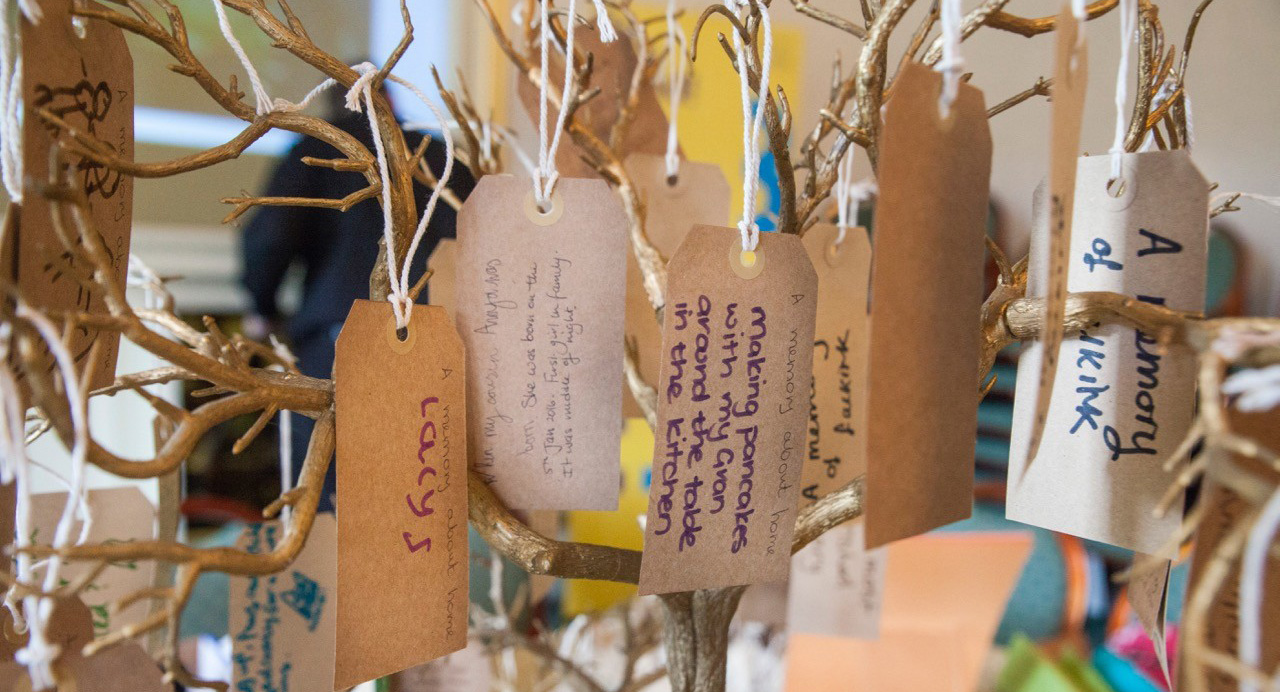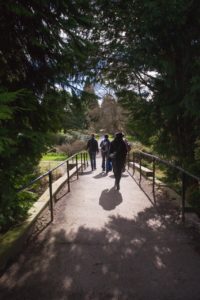This resource is great for:
Using memories to create stories.
Summary:
Three quick activities to help groups engage with memories and stories inspired by the environment around them.
Introduction:
As part of the Edinburgh International Book Festival’s LandWords project, video and performance artist Donna Rutherford has been working with pupils from Graeme High School to share their stories gathered from memory, from friends and family and from the discoveries made in a special exhibition on The History of Underwear!
Listen to the soundpiece they created together below, and then use Donna’s fun activities below to think about using memories in storytelling.
Activity One – Three Times Told
Divide your class into groups of three. Ask them to select a childhood memory that they’re comfortable sharing with the group. It doesn’t have to be anything big and meaningful – something simple, seemingly insignificant, works just as well. Once they’ve shared their memories as a group, ask them to decide on one of the three memories between them and for each individual in the group to then think how to make that story their own. They can change place, year, small details and so on, but the crux of the story must remain the same.
Next, ask each group of three to address the audience, ideally standing or sitting in a row, and one after another to share their version of the story. The audience then have to surmise who the original story belongs to.
This exercise works as an ice-breaker, builds on group decision making, performative storytelling, and simple creative tweaking of stories. It also gets you thinking of the retelling of memory and the common connections between all of our stories.

Activity Two – Rescued or Discarded
Select one word from each of the following lists:
A: Rescued, Resurrected, Renovated
B: Throwaway, Discarded, Ignored
Thinking of personal memory, ask your pupils to construct two short pieces of writing, one for each selected word, to illustrate a) a small incident, and b) a larger incident, something more meaningful to them.
“I finally threw it away after fourteen years – I threw away my dummy…”
“My dad is a builder and one day he was working underground and the torch he was using broke, he got an electric shock and he had to be rescued…”
Activity 3 – Connecting to Place
Think of a space that your group will all be familiar with – it could be somewhere as simple as your classroom, or a place that you have recently visited on a class trip such as an exhibition, the seaside or the Edinburgh International Book Festival!
Ask your group to note three things from the environment that jumped out at them – it could be anything from an exhibit, to a certain feature of a building, to a piece of nature. Building on this, ask the group to construct a short piece of writing connecting their observations to their own experiences and memories.
For example, the pupils at Graeme High School observed corsets and petticoats and connected them to their grandmothers. From something seemingly distant and ‘other’, the group forged personal and meaningful connections.
Further information:
Donna Rutherford is a writer and performance artist who has been creating theatre and video work since 1990. Her work manages to make difficult subjects such as displacement, family relations, ageing, and miscommunication in relationships accessible to wide audiences while developing innovative forms of personal storytelling. More information on her work can be found on her website: http://www.donnarutherford.org/

